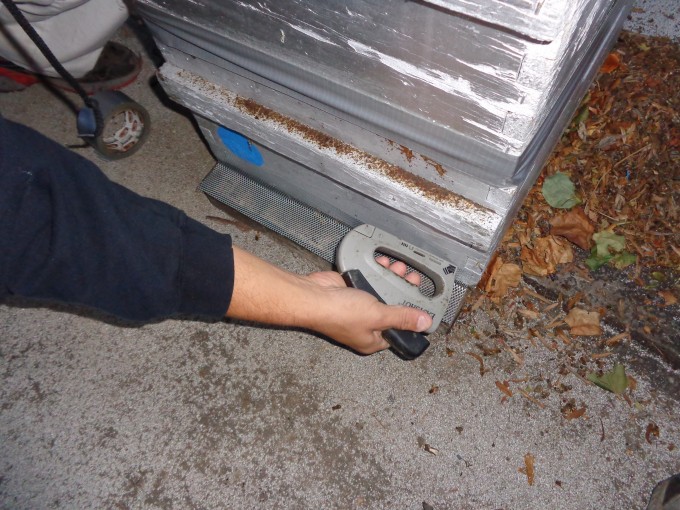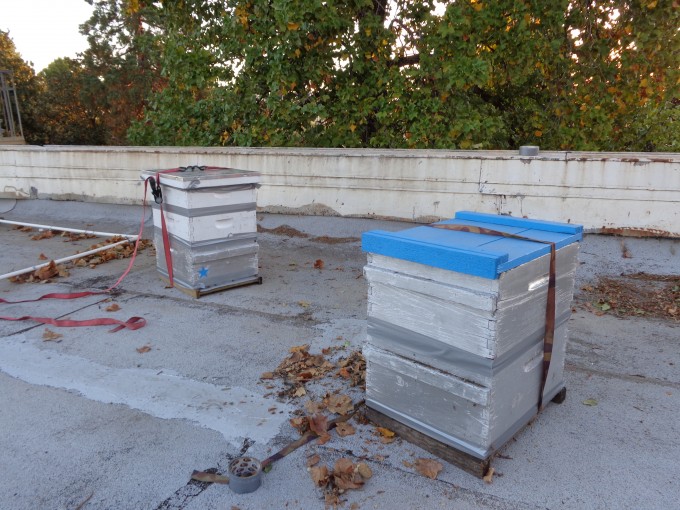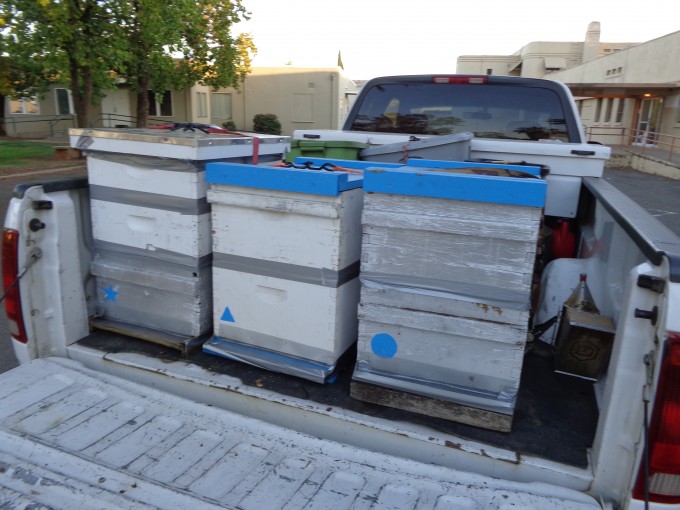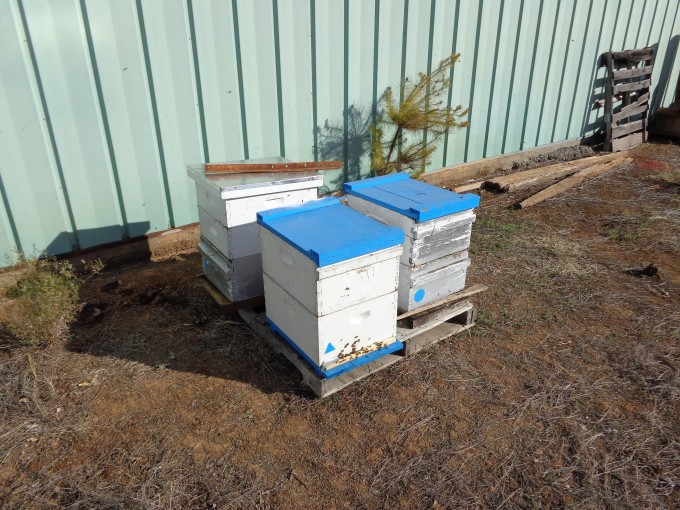At some point every beekeeper will need to move hives, whether it’s a beginning hobbyist bringing home their first colony or a seasoned professional moving an entire operation across the country. Here at the NorCal Bee Informed Partnership “headquarters” in Oroville, we recently relocated 4 rooftop colonies about a half mile away because some of the maintenance staff felt did not feel comfortable working on the AC units near the bees, and we wanted to avoid any issues before they happened! In this blog I would like to go through the basics of moving colonies and some lessons learned from our recent experience.
Step 1: Preparing the hives.
The night before the big move is a good time to get the hives ready, but for morning people, before dawn on the day of the move also works. If the hive is closed up during the day, any foragers out in the field will be left behind. Close up the hive by stapling a piece of #8 hardware cloth over the main entrance. Make sure it is the correct length and bend it 90 degrees so that it fits snugly in the entrance. Smoke the bees as needed to keep them calm and in the hive. Inspect the hive for other entrances such as gaps between boxes and cover these with duct tape or screen. Good ventilation is crucial, especially in warmer weather. Entire truckloads of bees have been lost to overheating. For long trips in hot weather it would smart to leave the outer cover off and replace the regular inner cover with a screened cover.

This would also be a good time to secure the hive to prevent it from shifting in transit. If the hive is well-propolized you may get away without securing it, but this can be risky, especially if the hives will be jostled at all during the move. The hive bodies, covers, and bottom boards may be fastened together with 2” staples, but many find it easier to use ratchet straps to keep the whole unit together.

Step 2: The move.
Moving hives is stressful for the bees (and beekeepers!) so it’s best to get on the road as soon as possible after the hives have been sealed and secured. Try to recruit a friend or two and use a dolly—you will be less likely to throw out your back or drop a hive. Every beekeeper seems to have a story of relocation gone wrong, mostly caused by dropping or tipping over hives. Bees are especially crawly and defensive at night, so suit up and take extra care when handling them. If possible, pack the hives in closely or wedge them in tight spaces in the truck or trailer to minimize shifting during transit.

Step 3: Reorientation
When bees are moved shorter distances (about 2 miles or less), foraging bees returning to their old location can be an issue. If the hive is only moved a few feet or over 2 miles, the bees will normally adjust with no problem. Otherwise, they may clump up on the ground where their hive was or fly around confused. You can help bees reorient to their new location by trying one or more of the following tricks.
–Sequestration. Leave the entrance screen in place for up to 72 hours after the move. This will cause some of the bees to reorient themselves next time they go out. This does stress the bees somewhat and is not recommended in hot weather.
–Move hives in rainy weather/winter. This works like sequestration because most bees will not be flying.
–Place an object in front of the entrance. This method seems to work fairly well as long as the bees have to crawl through an obstruction as they leave the hive. A leafy branch or similar object will cause the bees to reorient themselves because the view from the hive is unfamiliar.
To conclude, moving bees can be a daunting process, but with a little preparation and forethought you can definitely master this skill.
